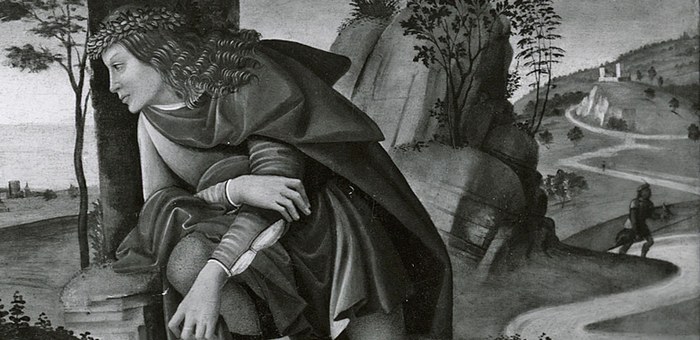The art historian and Italian Renaissance scholar Everett Fahy (1941 -2018) was Director of the New York Frick Collection (1973-1986), then Chief Curator of the Metropolitan Museum’s Department of European Painting (1986-2009). He met Federico Zeri in the late Sixties and the two of them thereafter kept up a brisk exchange of notes on their research and discoveries. Fahy was a member of the Scientific Board of the Federico Zeri Foundation from the time it was set up. In February 2017 he wrote to the Rector of Bologna University expressing his wish to donate the sections of his photo archive on Italian painting to the Zeri Foundation It is an exceptionally interesting archive, perfectly integrating the Zeri collection, especially in its core sections on late 15th-century Florentine Painting.
The Everett Fahy archive that has come to Bologna comprises 39,800 photographs and a wealth of hard-copy documents flanking the photos.
In the tradition of connoisseurs like Berenson and Zeri, Fahy deemed such a collection an indispensable work resource, a repertory supporting critical and philological investigations into artworks from the Sixties down to 2017.
It contains photos and recent photomechanical prints that document not just paintings in museums, churches and important public and private collections, but also works that have come onto the market in the last decade and are hence not found in the Zeri Archive.
The photos stem almost entirely from antiquarians, collectors and auction houses which made them over to the scholar in return for scientific consultancies rendered. They are black and white positive prints. As the letters accompanying the photos confirm, it was Fahy who asked his counterparts for this kind of visual documentation, in preference over colour prints and slides.
The core of the collection is Italian art from the 13th to the 19th century, which occupied no less than 380 of the 398 boxes that arrived in Bologna; the bulk of the documents regard the 15th and 16th centuries. The order is geographical from the Abruzzi to Verona, and then chronological by centuries. For each century or section of century the photos are in folders bearing the individual authors’ names.
In keeping with Fahy’s research, a large part of the documentation relates to Florentine artists, especially from the second half of the 15th century, with nucleuses devoted to Botticelli, Piero di Cosimo, Iacopo del Sellaio, Cosimo Rosselli and Fra Bartolomeo. The folders on Ghirlandaio’s pupils are especially copious; they were a focus of interest for Fahy right from the time of his PhD which he gained at Harvard in 1968.
Other fully documented areas are Siena and Pisa, Umbria, Rome and Venetia, works from the 14th-17th century predominating.
Besides this bulky section on Italian art arranged by the scholar, there is a core section of ‘fakes’ and eight envelopes of miscellaneous material.
Like other art historians, Everett Fahy used the backs of photos as a kind of notepad on which to jot attributions, suggestions, the work’s collection history and remarks on iconography. The systematic and analytical quality of Fahy’s notes is even superior to Zeri’s, above all for the biobliographical references which are transcribed in exhaustive detail in regular, elegant, legible handwriting. Such notes provide a wealth of up-to-date information and are most useful for the researcher.
One point in which Fahy’s differs from Zeri’s archive is in its huge amount of hard-copy, not photographic, material: letters, memos, clippings from auction catalogues, photocopies, drafts of articles, notes documenting day-by-day research into artworks. The scholar’s personal archive is part and parcel of the photo archive.
Fahy’s photo archive is currently being comprehensively mapped and plans for cataloguing it are going ahead, trying to retain its own special features whilst fitting in with Zeri’s which is already on line. The model devised by the Foundation enables one to make use of already supplied descriptions; attached to the OA files of paintings and sculptures are descriptions of all photographs of the same subject traced to the various photocollections that have been acquired.There are also plans to provide a succinct catalogue of attached documents which outnumber the photos; this will give an idea of their quantity and the information they contain.
